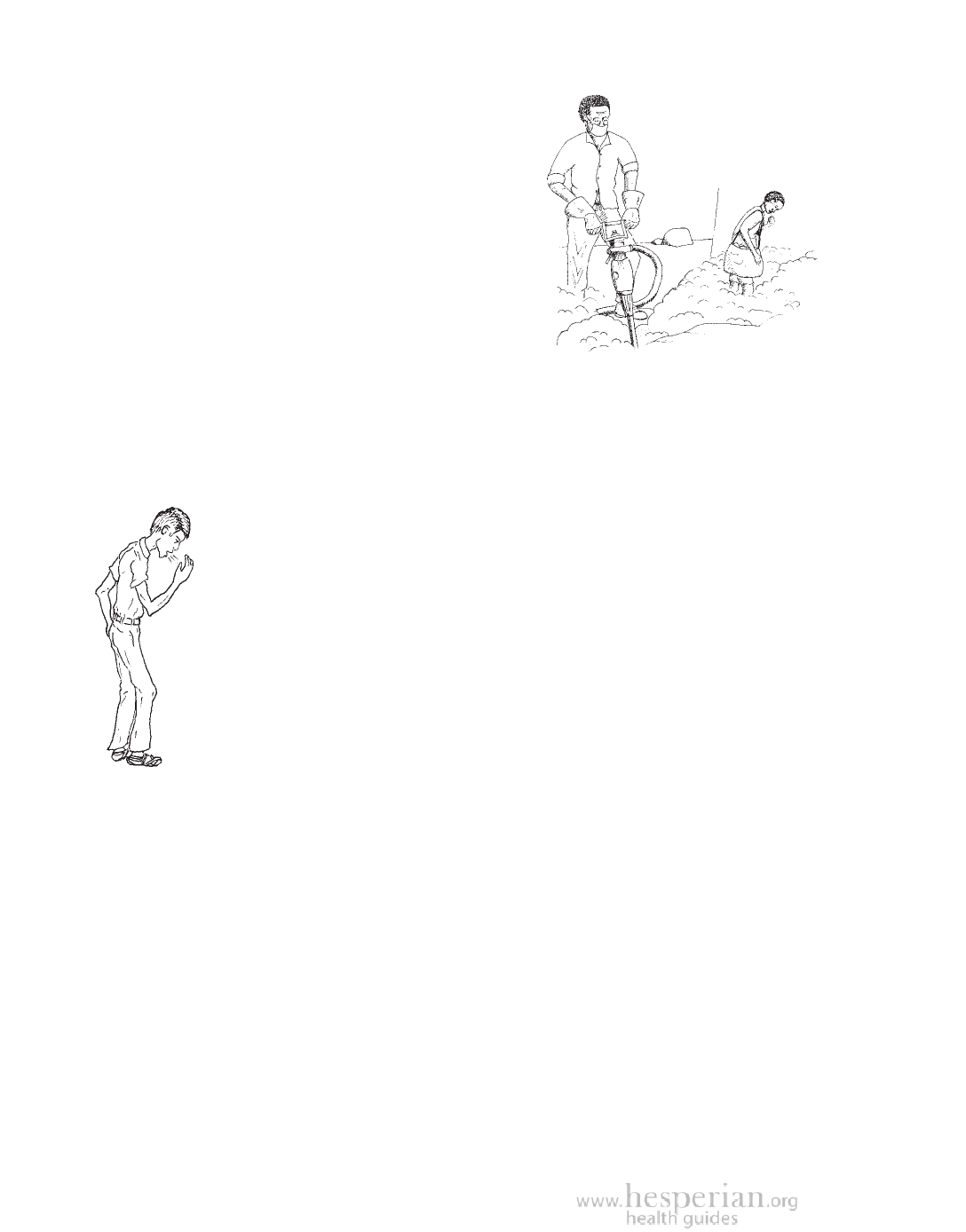
476 Mining and Health
Illnesses from Dust
Lung damage caused by rock and mineral
dust is a major health problem. Whether you
are mining underground or above ground,
you may develop lung damage if:
• dust covers your clothes, body, and
equipment as you work.
• you cough a lot and have trouble
breathing.
Once dust has damaged the lungs, there is no way to reverse the damage.
Dust is a threat both to mineworkers and to communities near mines.
The most dangerous kinds of dust are coal dust, which causes black lung
disease, and silica dust, which causes silicosis. Dust that contains asbestos (which
causes asbestosis, see page 371) or heavy metals (page 337) is also dangerous.
Signs of lung damage
Dust from mining can make it difficult to breathe. Large amounts
of dust can make the lungs fill with fluid and swell up. Signs of
lung damage from dust include:
• shortness of breath,
coughing, wheezing
• coughing up green or
yellow sputum (mucus that
comes up from the lungs)
• sore throat
• bluish skin at ears or lips
• fever
• chest pain
• loss of appetite
• tiredness
Black lung disease, silicosis, and asbestosis, are serious conditions with no
cure. It is best to prevent exposure to harmful dust. Because these diseases
worsen very quickly, by the time you have signs all you can do is keep the
disease from getting worse. If you have any of the signs above, or have been
exposed to these kinds of dust, see a health worker right away.
Because smoking greatly increases the risk of lung damage from dust, it is
particularly important that miners do not smoke tobacco.
Black lung disease and silicosis
Black lung is caused when coal dust blocks the lungs, causing severe and
permanent breathing problems. Underground coal miners, and children and
women who work separating rocks from coal, are most affected by black lung.
Silicosis is caused by exposure to silica dust. Silica is a common mineral
released from sand and rocks during mining, exposing many miners to harm.
A Community Guide to Environmental Health 2012